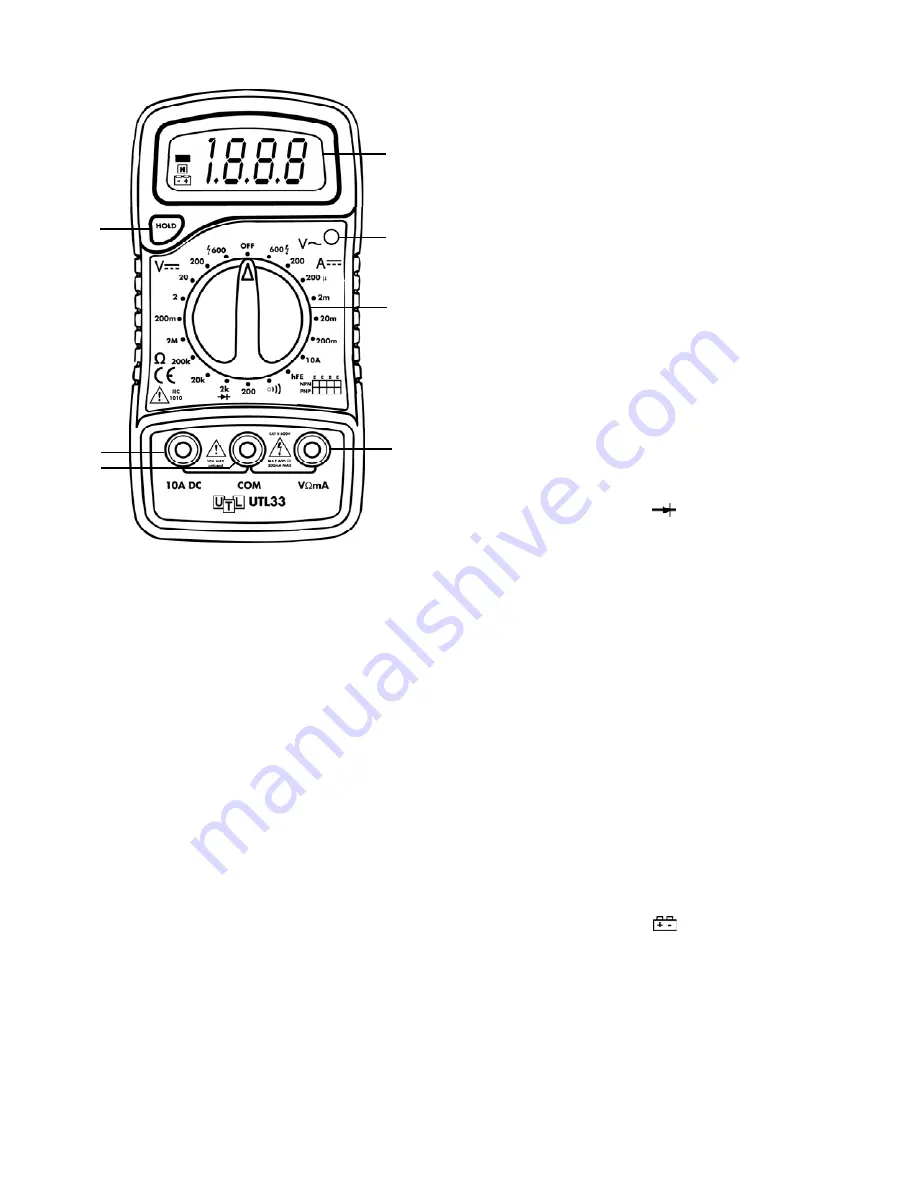
AC Voltage Measurement
1. Connect the red test lead to the “
V
Ω
mA
” jack and the black lead
to the “
COM
” jack.
2. Set the rotary switch at desired AC V position.
3. Connect test leads across the source or load being measured.
4. Read voltage value on the LCD display.
Resistance Measurement
1. Connect the red test lead to the “
V
Ω
mA
” jack and the black lead
to the “
COM
” jack (The polarity of red lead is positive “
+
”).
2. Set the rotary switch at desired AC V position.
3. Connect test leads across the resistor to be measured and read
LCD display.
4. If the resistance being measured is connected to a circuit, turn off
power and discharge all capacitors before applying test probes.
Diode Test
1. Connect the red test lead to the “
V
Ω
mA
” jack and the black lead
to the “
COM
” jack (The polarity of red lead is positive “
+
”).
2. Set the rotary switch at “ “ position
3. Connect the red test lead to the anode of the diode to be tested
and the black test lead to the cathode of the diode. The approx.
forward voltage drop of the diode will be displayed. If the
connection is reversed, only figure “
1
” will be shown.
Transistor Test
1. Set the rotary switch to “
hFE
” position.
2. Determine whether the transistor under testing is NPN or PNP and
locate the emitter, base and collector leads. Insert the leads into
proper holes of the “
hFE
” socket on the front panel.
3. Read the approximate “
hFE
” value at the test condition of base
current 10µA and Vce 3V.
NOTE:
To avoid electrical shock, remove test leads from measurement
circuits before testing a transistor.
Audible Continuity Test
1. Connect the red test lead to the “
V
Ω
mA
” jack and the black lead
to the “
COM
” jack.
2. Set the rotary switch at “ “ position
3. Connect test leads to two points of circuit to be tested. If continuity
exists, built-in buzzer will sound.
Operating Instructions
DC Voltage Measurement
1. Connect the red test lead to the “
V
Ω
mA
” jack and the black lead
to the “
COM
” jack.
2. Set the rotary switch to the desired DC V position. If the voltage to
be measured is not known beforehand, set range switch to the
highest range position and then reduce it until satisfactory
resolution is obtained.
3. Connect test leads across the source or load being measured.
4. Read voltage value on the LCD display along with the polarity of
the red lead connection.
DC Current Measurement
1. Connect the red test lead to the “
V
Ω
mA
” jack and the black lead
to the “
COM
” jack (For measurements between 200 mA and 10A,
remove red lead to “
10A”
jack).
2. Set the rotary switch to the desired DC A position.
3. Open the circuit in which the current is to be measured, and
connect test leads in series with the circuit.
4. Read current value on LCD display along with the polarity of red
lead connection.
UTL33-MAN
P. 2
4
1
2
BACK LIGHT
3
5
6
7
























